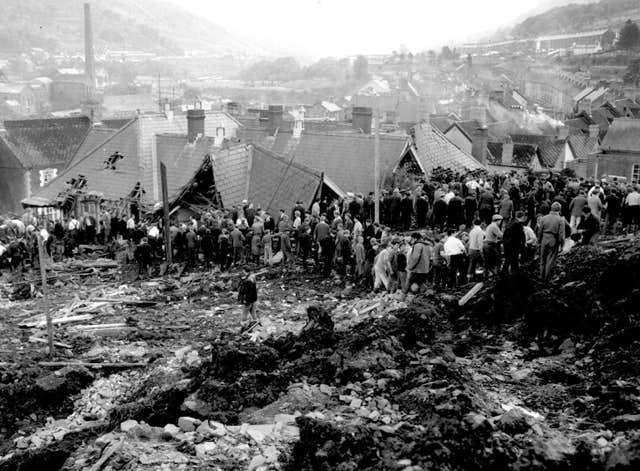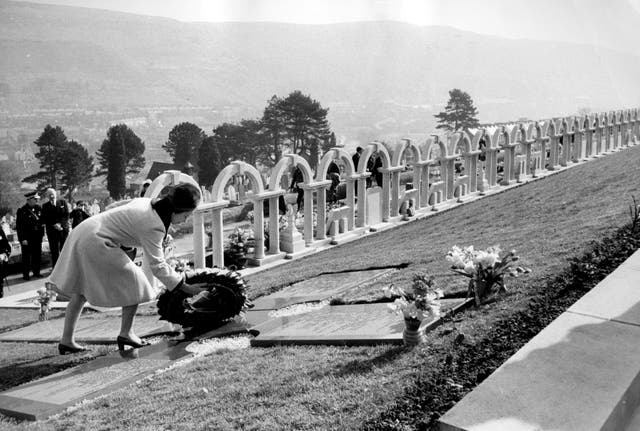William and Kate visit site of 1966 Aberfan disaster
The Prince and Princess of Wales walked through the Aberfan Memorial Garden to pay respects to those who died when a spoil tip collapsed on a school.

The Prince and Princess of Wales have visited the Welsh village of Aberfan, the site of the 1966 disaster in which 144 people, including 116 children, were killed.
William and Kate were led through the Aberfan Memorial Garden on Friday to pay their respects to those who died when a colliery spoil tip collapsed and sent tonnes of ash slurry onto the village below.
The garden sits on the site of former Pantglas Primary School, which was engulfed by the landslide at 9.13am on October 21 1966, just as lessons had begun.
They were guided around the memorial garden by Aberfan survivor David Davies, a former pupil at Pantglas Primary School, and Professor Peter Vaughan, Lord Lieutenant of Mid Glamorgan.
They met trustees from the Aberfan Memorial Trust who are involved in ensuring the maintenance of the garden, alongside some of the Aberfan Wives group who lost relatives in the disaster.
It is the first time the royal couple has been to the village near Merthyr Tydfil in South Wales.

Her decision not to visit sooner was said to have been one of the greatest regrets of her reign.
Despite this, mourners gathered to meet her and the bond she made with those she spoke to during that visit on October 29 1966 endured throughout the rest of her life.
In 1974, she opened the garden to commemorate the victims and provide a place for bereaved families, survivors and the community to pay their respects.

On the 50th anniversary of the disaster, her son Charles – then the Prince of Wales – visited the village and delivered a message from the Queen.
In it she said: “I well remember my own visit with Prince Philip after the disaster and the posy I was given by a young girl which bore the heart-breaking inscription ‘from the remaining children of Aberfan’.
“Since then we have returned on several occasions and have always been deeply impressed by the remarkable fortitude, dignity and indomitable spirit that characterises the people of this village and the surrounding valleys.”

The one that devastated the village below was created in 1958, stood 111ft high and went against the National Coal Board’s (NCB) rules because it was partly built on ground which had water springs underneath.
After three weeks of heavy rain the slurry slipped down the side of the hill.
An official inquiry into the tragedy eventually blamed the NCB leaders, who had ignored repeated warnings about the tip’s dangerous condition from local residents and Merthyr Borough Council.





